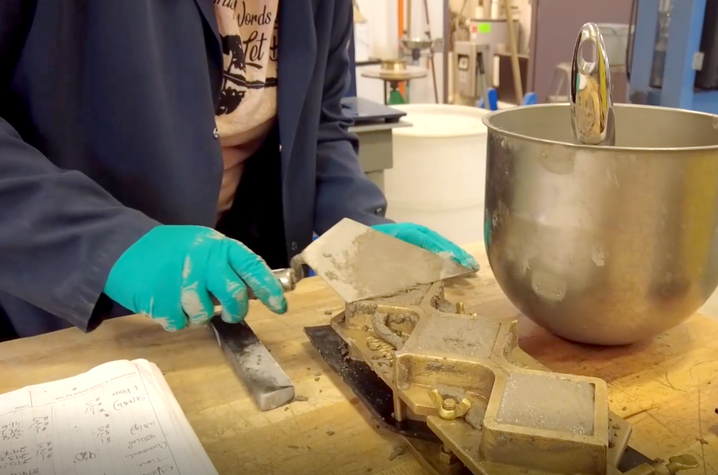CAER researchers to develop new concretes for military, offer unique graduate training opportunity

The University of Kentucky Center for Applied Energy Research (CAER) received a grant from the U.S. Department of Defense to develop next-generation cements and concretes as well as train the next generation of researchers to work on high-performance cementitious materials.
This unique research and education program is funded by the U.S. Army Engineer Research and Development Center (ERDC), the premier research and development center for the U.S. Army Corps of Engineers.
On the research side, this phase 2 grant funding will allow CAER researchers to focus on scaling up materials that were developed during phase 1. CAER’s cementitious research group, which develops next-generation cements and concretes, will test structural elements that are placed into service immediately after fabrication.
“We have developed some high-performance materials that show great promise for the immediate repair of shock-damaged structures,” said Bob Jewell, associate director for research at CAER. “We look forward to structurally testing those materials, working alongside our partners at ERDC to provide a solution to this pressing military issue.”
Additionally, this grant will provide funding for the ERDC Scholars program at UK. The program seeks to identify and recruit talented students to complete their graduate degree working in CAER labs on ERDC projects. The ERDC Scholars position will also provide an opportunity for a summer internship working alongside ERDC researchers in their laboratories in Vicksburg, Mississippi.
“This grant provides a really unique opportunity to UK graduate students,” said Rodney Andrews, CAER director. “Not only will you get to work on real-life applications alongside talented and experienced cementitious researchers here at CAER, these scholars will have an opportunity to go to ERDC and work with some of the best engineers and researchers in the U.S. military.”
This material is based upon work supported by, or in part by, the U.S. Army Engineer Research and Development Center (ERDC) and the U.S. Army Corps of Engineers under award number W912HZ229C004. Any opinions, findings, and conclusions or recommendations expressed in this material are those of the author(s) and do not necessarily reflect the view of the U.S. Army Corps of Engineers.
Credits
Photo: Makiyah Owens (CAER)
Words: David Melanson (CAER)
